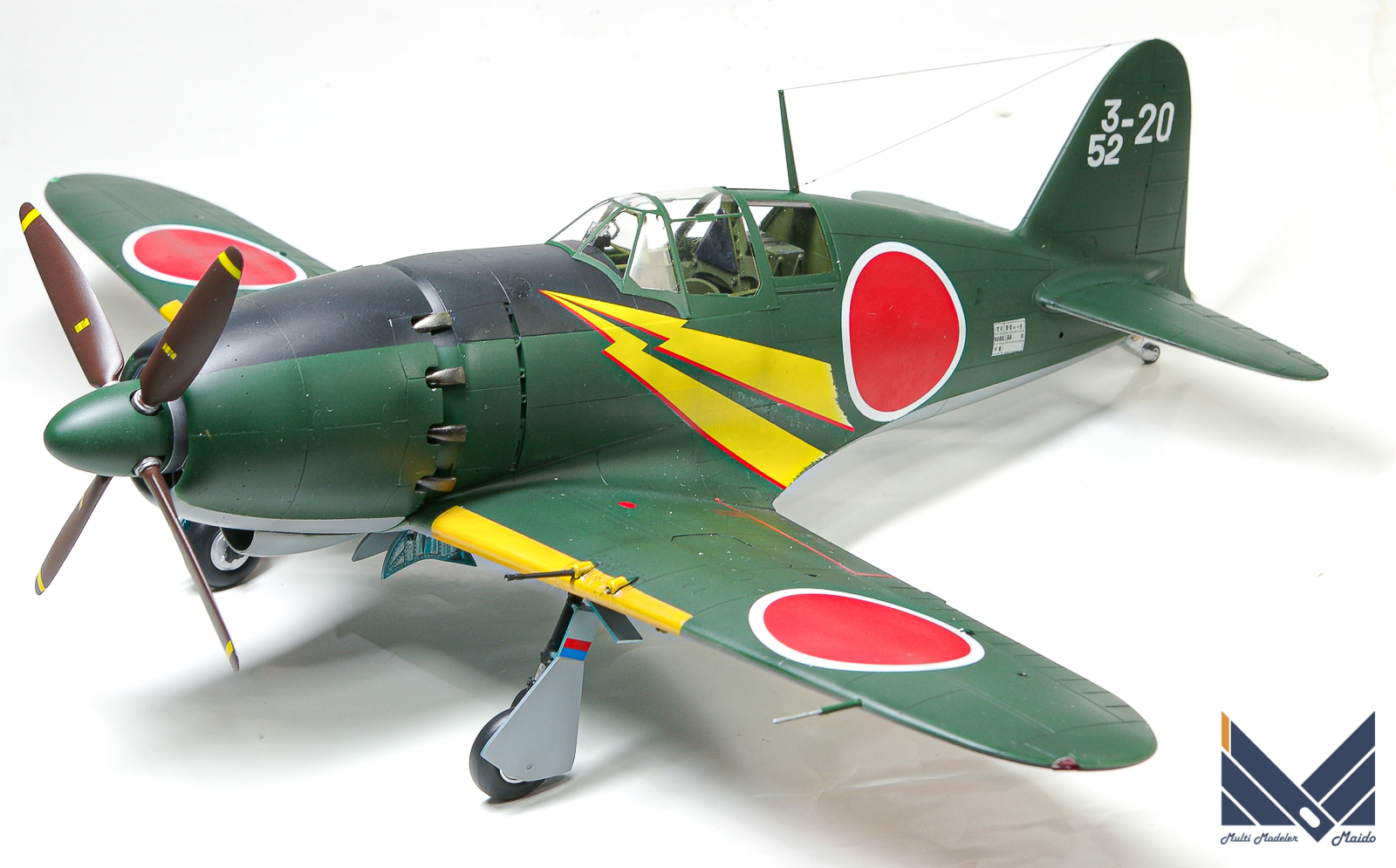
ハセガワの1/32 日本海軍局地戦闘機雷電 プラモデルの完成品です。
2011年製作
1/32 of Hasegawa Japanese Navy local fighter Raiden plastic model finished product.
Made in 2011
実機解説
「雷電」は日本海軍の局地戦闘機です。局地戦闘機とは陸上基地からの運用を行う機体で、
1 敵爆撃機の飛行高度で短時間で到達する上昇力
2 敵爆撃機を攻撃できる速力
3 敵爆撃機へ確実に致命傷を与えうる火力
が要求され。「雷電」は開発当時最も強力な日本のエンジンの三菱の「火星」が選ばれ開発されました。爆撃機用の太いエンジンを選択したために機体のシルエットは日本機離れしたズングリしたものとなりました。
当初「雷電」は零戦に変わる基地航空隊主力を期待されたのですが、開発は難航し結局実戦配備されたのは1943年になってからとなりました。雷電は開発が遅れたことにより紫電改と同時期の戦線投入となりました。横須賀航空隊が雷電よりも紫電改に高い評価を与えた為、紫電改が優先して生産配備されることになりました。しかし、雷電は その上昇力と速度で日本に来襲するB-29の迎撃に、その真価を発揮する事となりました。特に厚木の302空などの活躍は有名です。確か「零戦」か何かの本で「B-29を迎撃できるのはまず雷電だけ」という記述もあったように思います。
“Raiden” is an interceptor fighter of the Japanese Navy. An interceptor fighter is an aircraft that operates from a land base, and the following three points were required.
1 Ascending power reached in a short time at the flight altitude of the enemy bomber
2 Speed to attack enemy bombers
3 Firepower that can surely cause fatal injury to enemy bombers
“Raiden” was developed by selecting Mitsubishi’s “Mars”, the most powerful Japanese engine at the time of development. Due to the selection of a thick engine for bombers, the silhouette of the aircraft has become a zungri that is far from the Japanese aircraft.
Initially, “Raiden” was expected to be the main force of the base aviation corps to replace the Zero fighter, but development was difficult and it was not until 1943 that it was finally deployed in the actual battle. Raiden was launched on the front line at the same time as Shiden Kai due to the delay in development. Since the Yokosuka Air Group gave Shiden Kai a higher rating than Raiden, Shiden Kai will be given priority in production and deployment. However, Raiden will show its true value in intercepting the B-29 that invades Japan with her ascending power and speed. Especially, the activities such as 302 Sky in Atsugi are famous. Certainly, I think there was a description in “Zero Fighter” or some other book that “Only Raiden can intercept the B-29.”
キット紹介
2011年当時としては、胴体内や主翼内部の桁など組み立て易さに革新的な発想が取り入れられています。実際に胴体と主翼の組み易さはかなりのものですモールドなども上品なハセガワスタンダードのものです。
しかし、カウリングが基本的に一一型(胴体に機銃がある)のもので、その穴を「埋めるパーツ」があるにはあるんですが・・・・・・・うーん、パテ要らずというわけにはいかなかったです(私だけかもしれませんけど)。また、主翼の機銃の取り付けも開口指示があるというもので、「組み易さ」に関してはちぐはぐ感を否定できませんでした。ですが、これだけの大きさのキットで実売4000円位というのはなかなか「お値打ち感」はありますね。
As of 2011, innovative ideas have been incorporated into the ease of assembly, such as the girders inside the fuselage and inside the main wings. Actually, the fuselage and main wings are quite easy to assemble. The mold is also an elegant Hasegawa standard.
However, the cowling is basically a type 11 (with a machine gun on the fuselage), and although there are parts that “fill the hole”, putty is required. There was also an opening instruction for the installation of the main wing machine gun, so I could not deny the imbalance in terms of “ease of assembly”. However, a kit of this size is quite “value-for-money” for an actual sale of around 4000 yen.
完成品画像
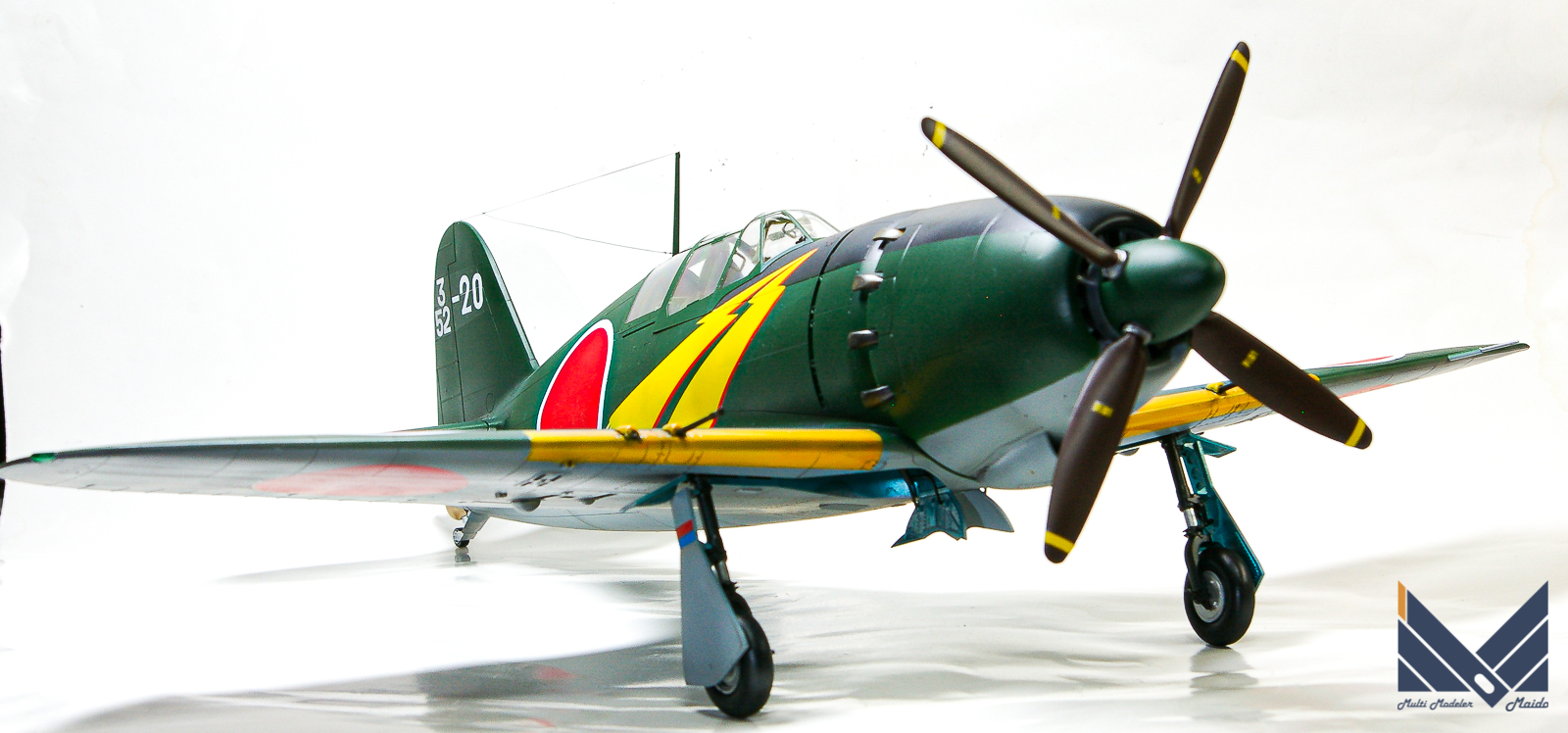
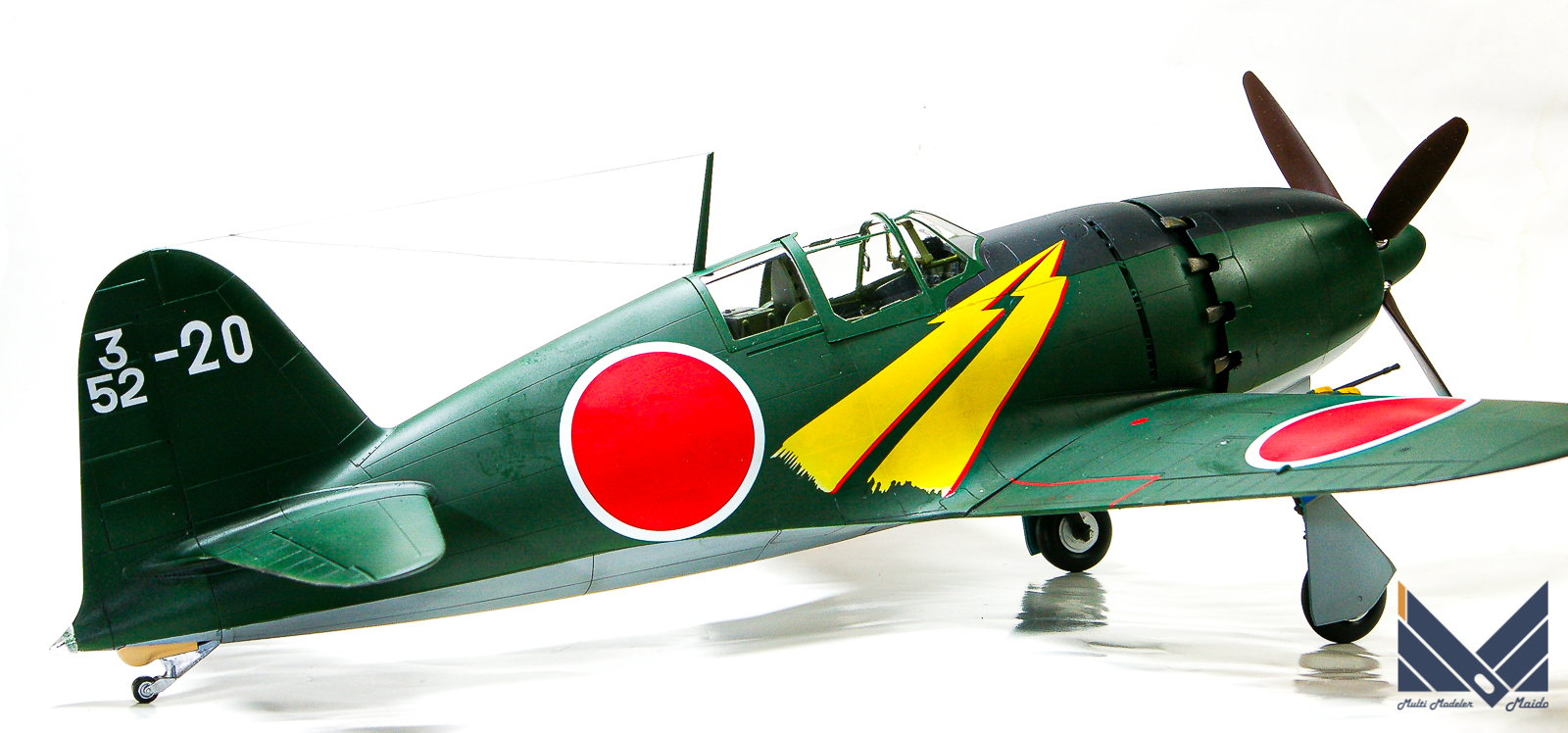
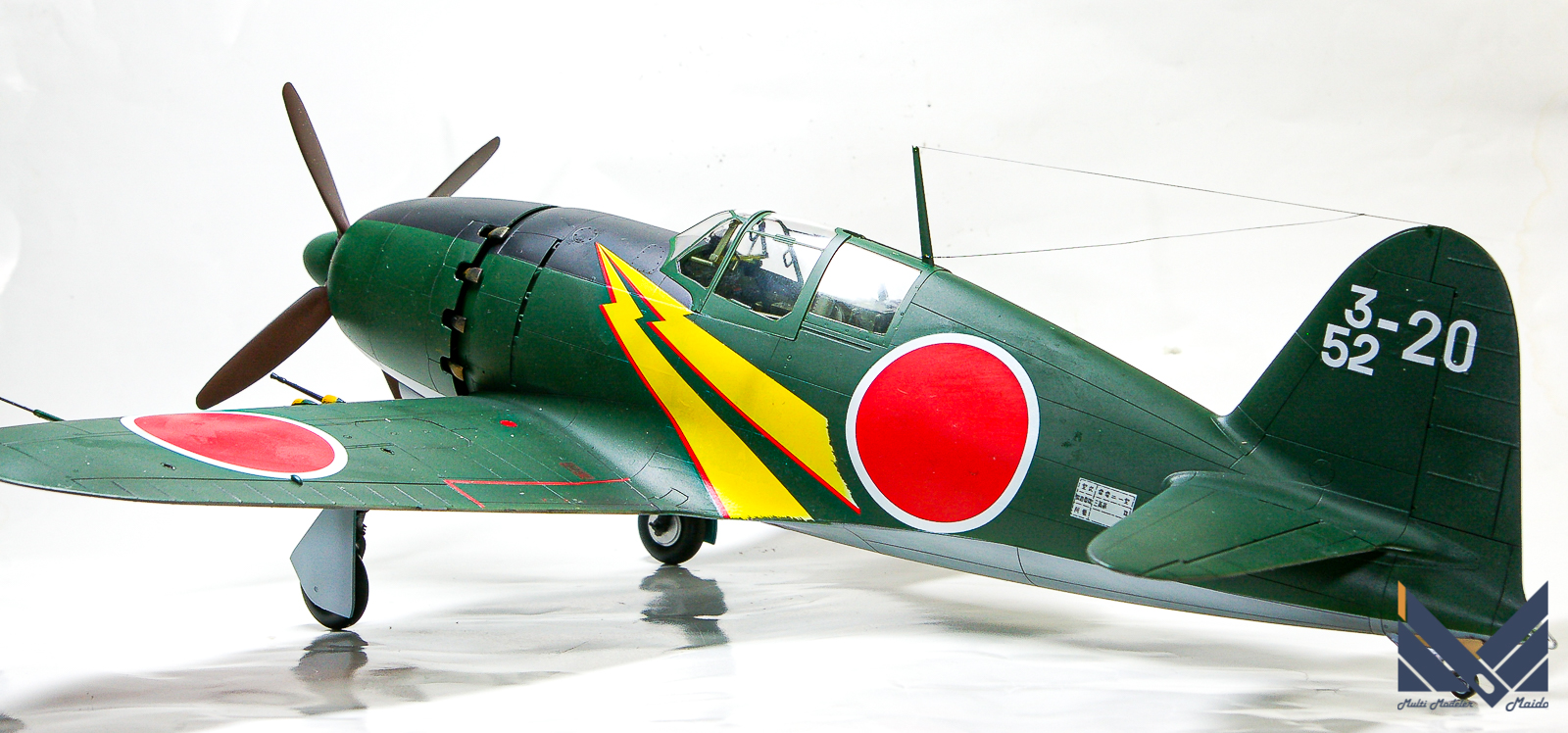
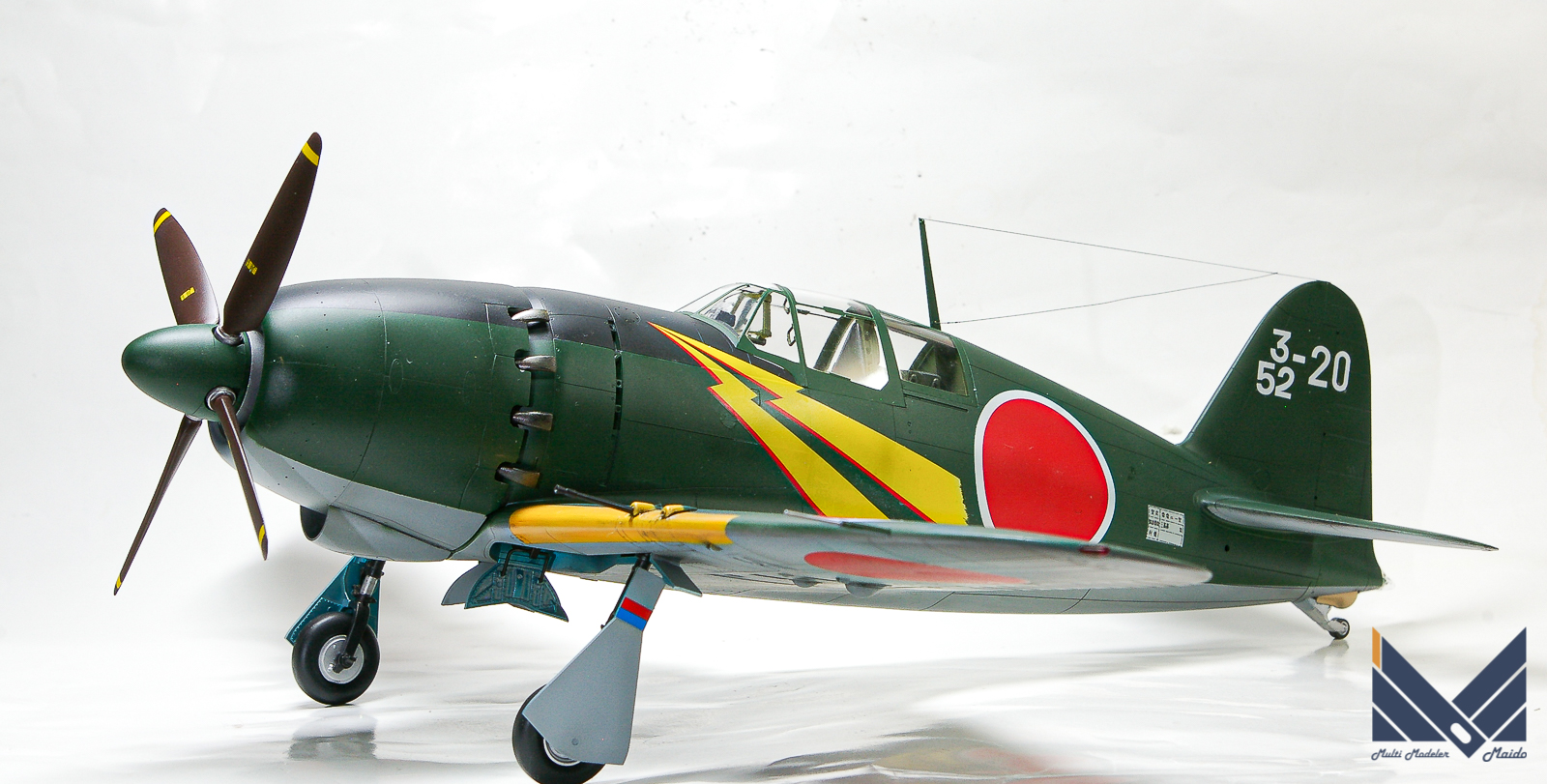
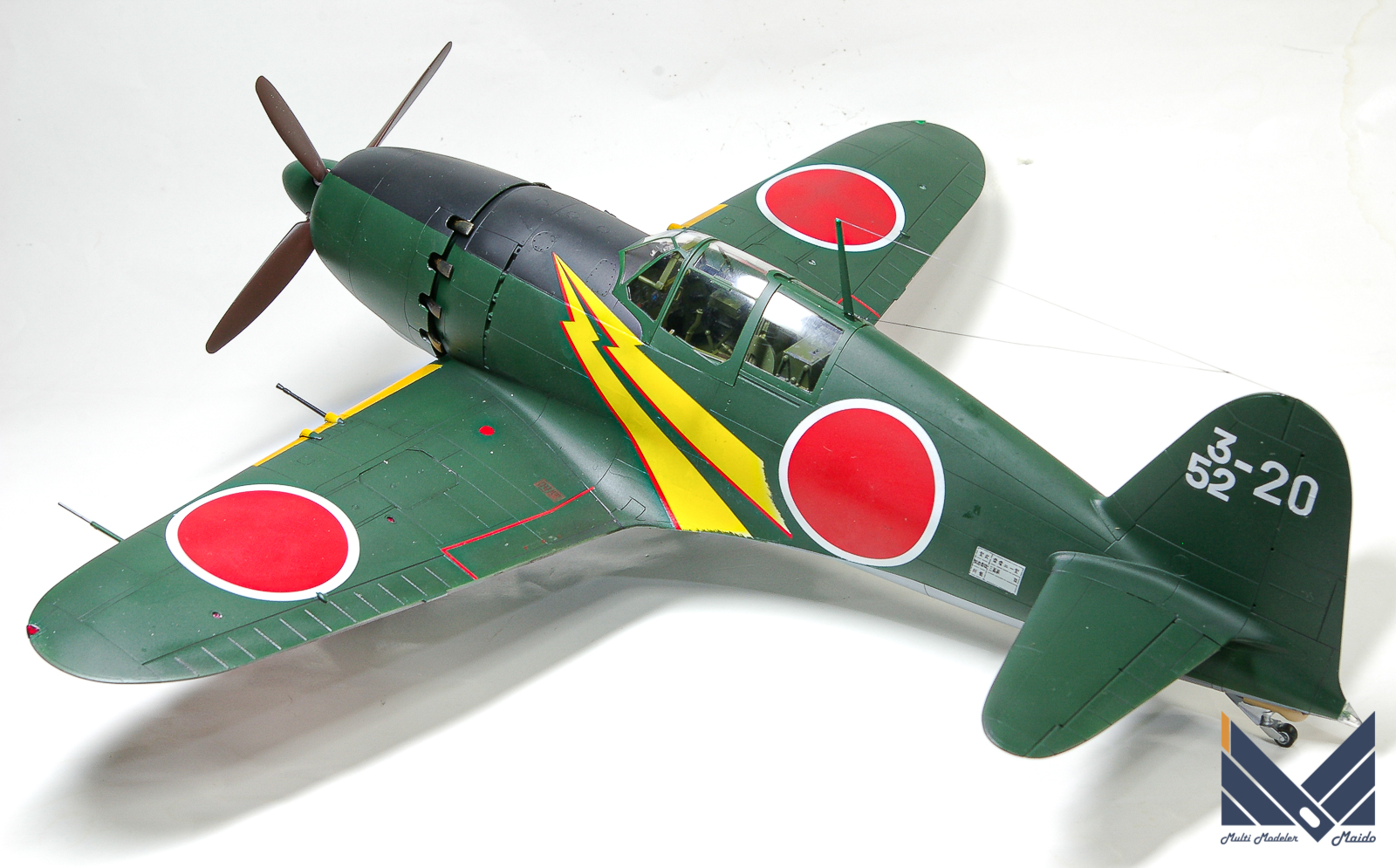
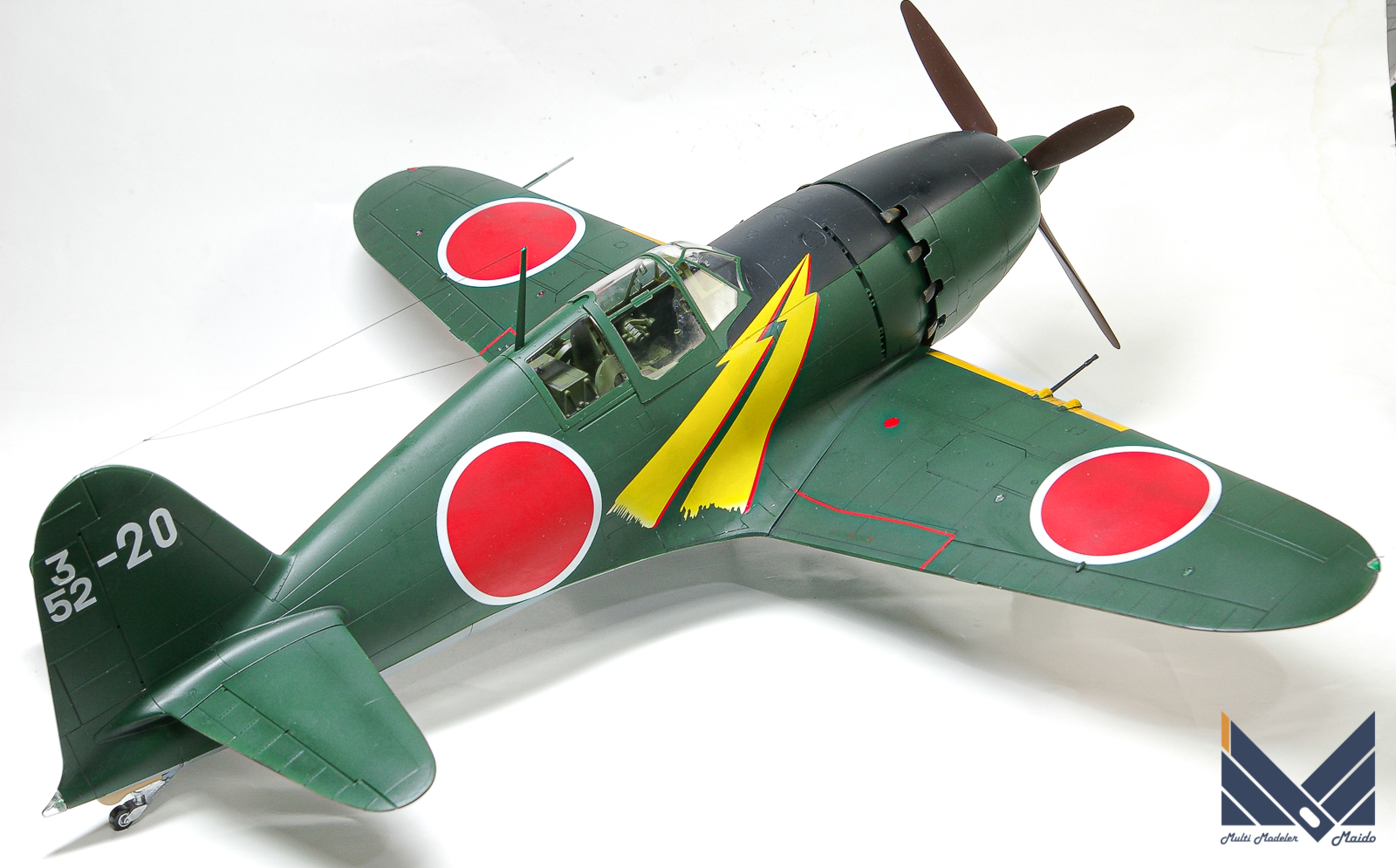
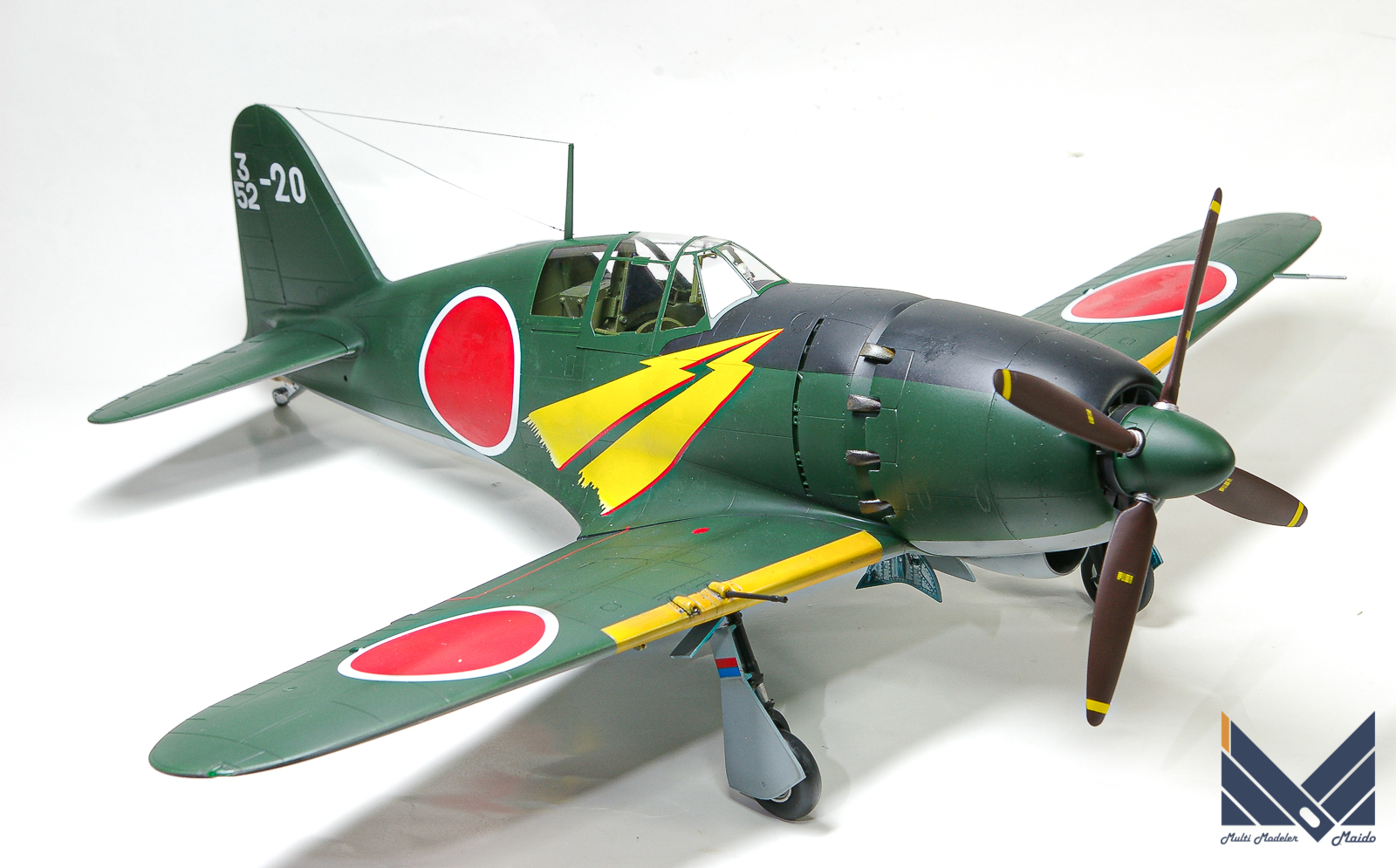
こちらの完成品もご覧ください
投稿者プロフィール
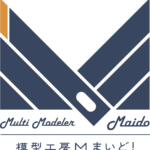
-
模型好き。カメラ好き。各模型雑誌で掲載多数。
艦船模型、飛行機模型、AFV模型などプラモデル全般の制作代行も承っております。「お問い合わせ」からご連絡ください。製作代行ご案内のページは現在概要のみを公開しておりますが、2025年6月現在納期はご相談になりますが、制作代行可能です
 製作代行について(β版)2024年4月6日詳細な製作代行などはのちに追加しますが、お問い合わせのあった方の最初のご案内メールの定型文を記しておきます。製作依頼の流れ1 キットに入っているパーツのみでの制作は、定価×6を基本価格としております。 キットをお送りいただ...
製作代行について(β版)2024年4月6日詳細な製作代行などはのちに追加しますが、お問い合わせのあった方の最初のご案内メールの定型文を記しておきます。製作依頼の流れ1 キットに入っているパーツのみでの制作は、定価×6を基本価格としております。 キットをお送りいただ...
最新の投稿
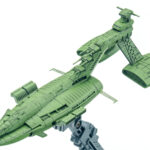 キャラクター模型完成品2025年12月23日バンダイ 1/1700 EXモデル ジオン公国軽巡洋艦ムサイ 完成品
キャラクター模型完成品2025年12月23日バンダイ 1/1700 EXモデル ジオン公国軽巡洋艦ムサイ 完成品 お知らせ2025年11月8日プレオープン記念キャンペーンのお知らせ
お知らせ2025年11月8日プレオープン記念キャンペーンのお知らせ お知らせ2025年11月8日プリントサービス プレオープンのお知らせ
お知らせ2025年11月8日プリントサービス プレオープンのお知らせ 製作記アーカイブ2025年11月5日製作記はYouTubeへ移行しました
製作記アーカイブ2025年11月5日製作記はYouTubeへ移行しました


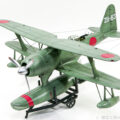
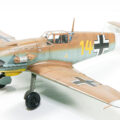

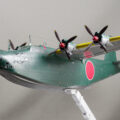
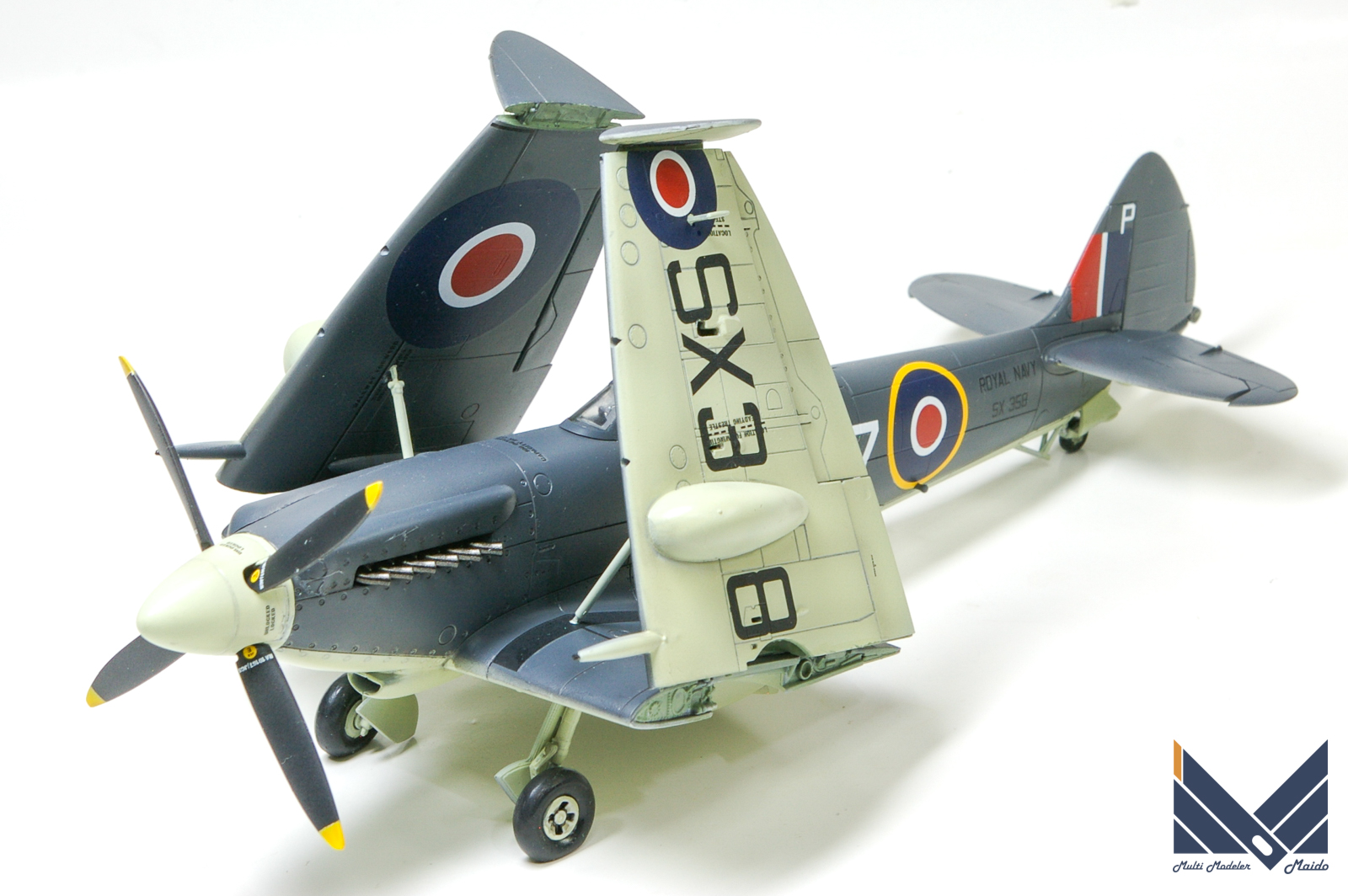
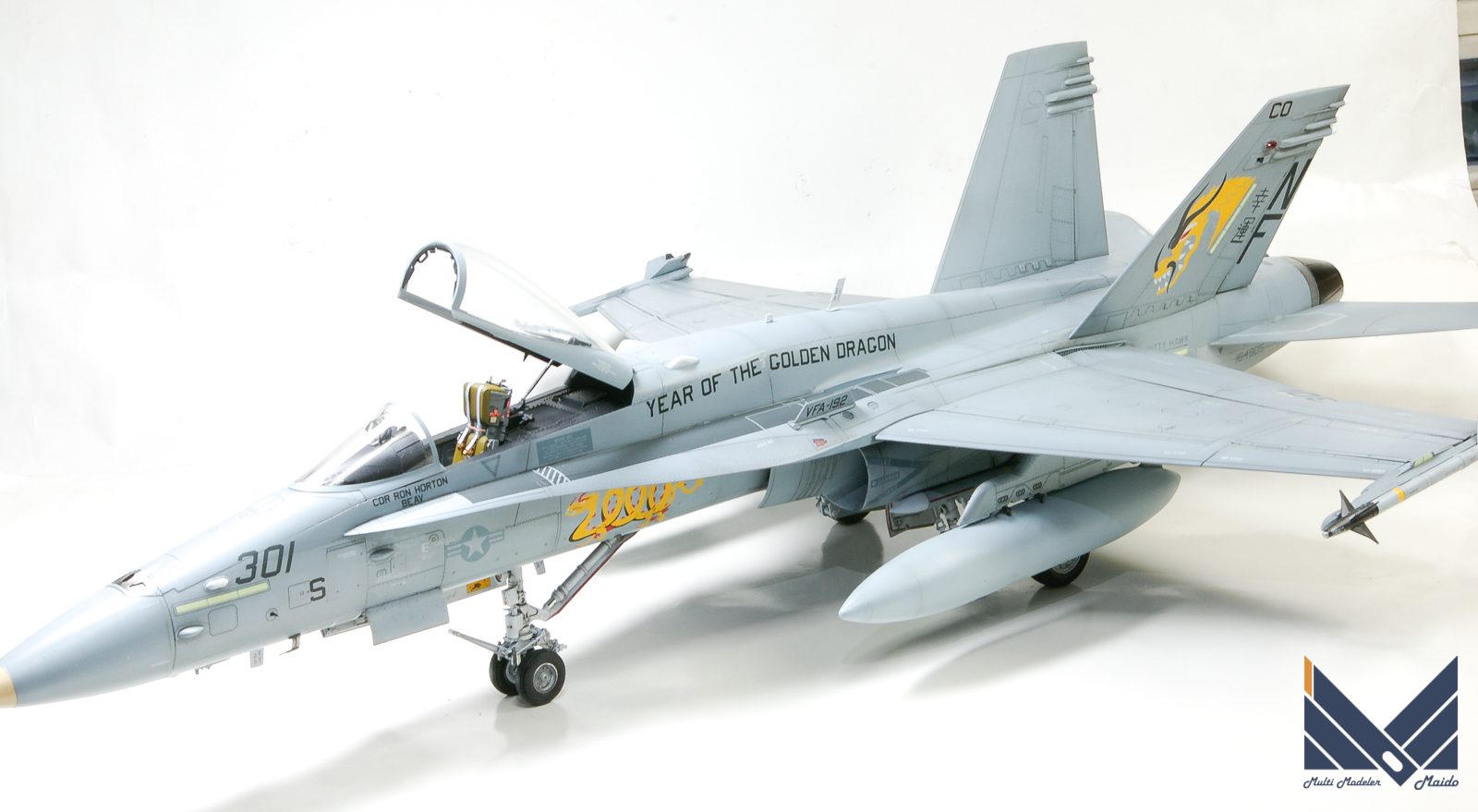
コメント